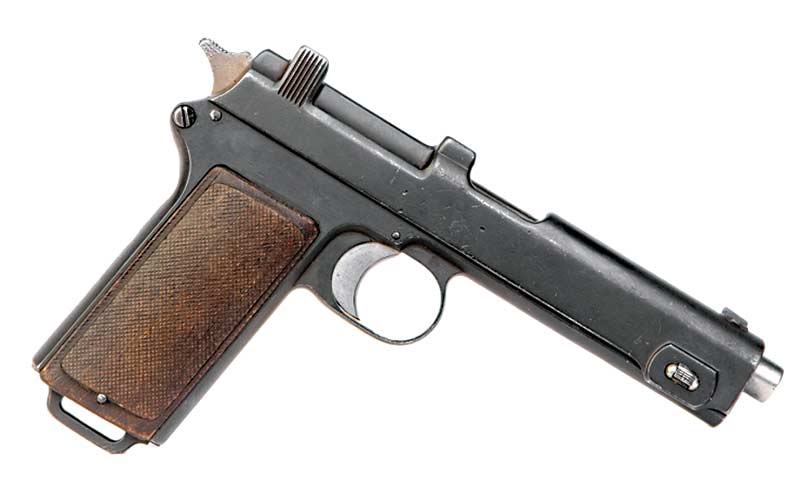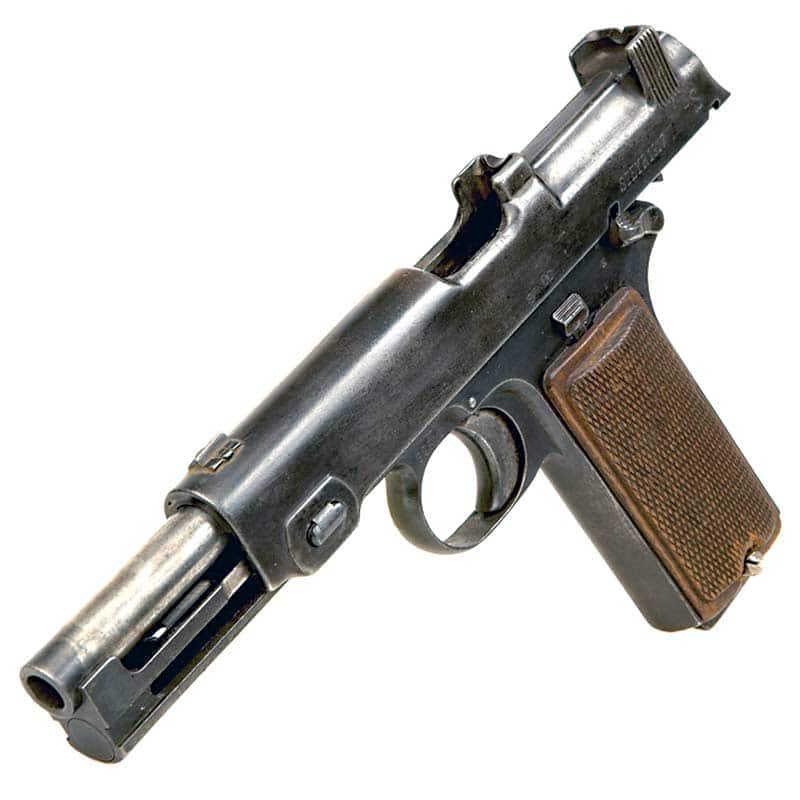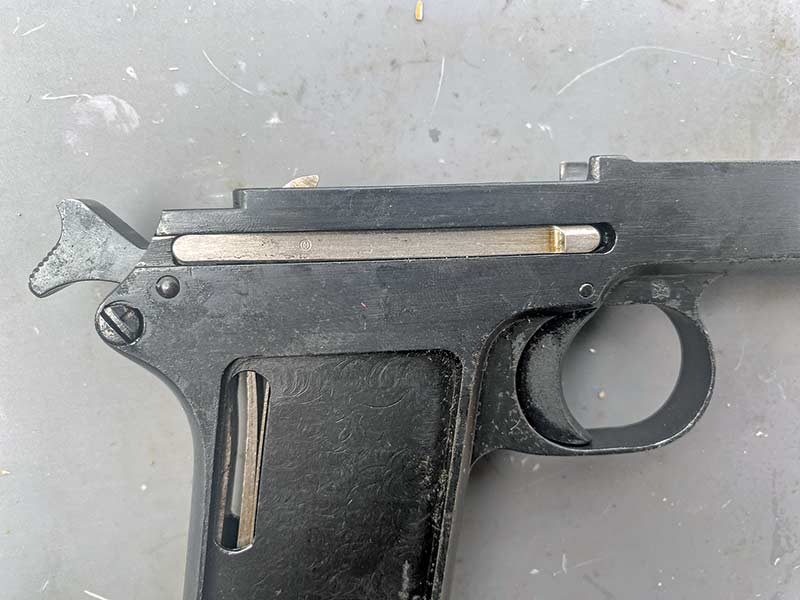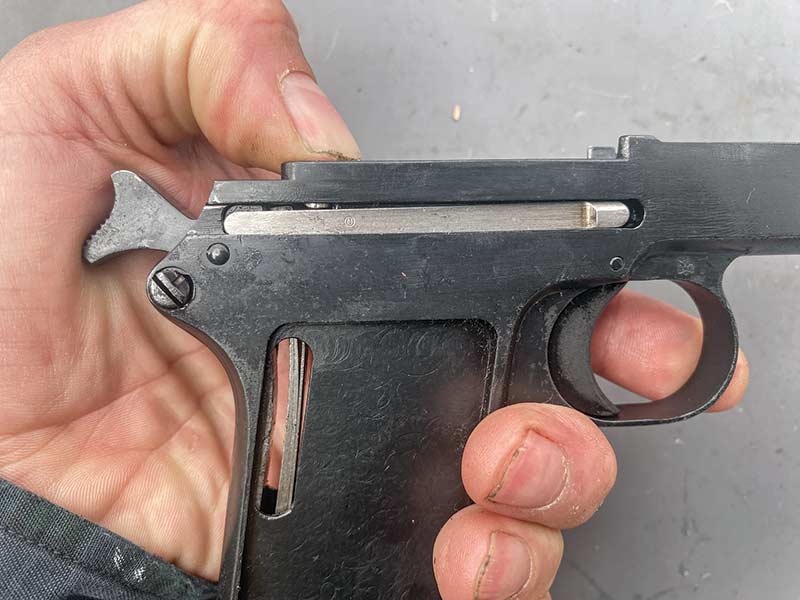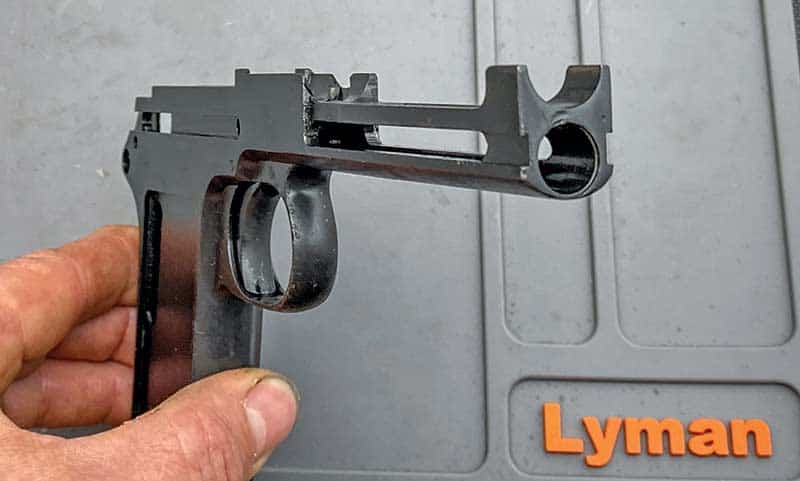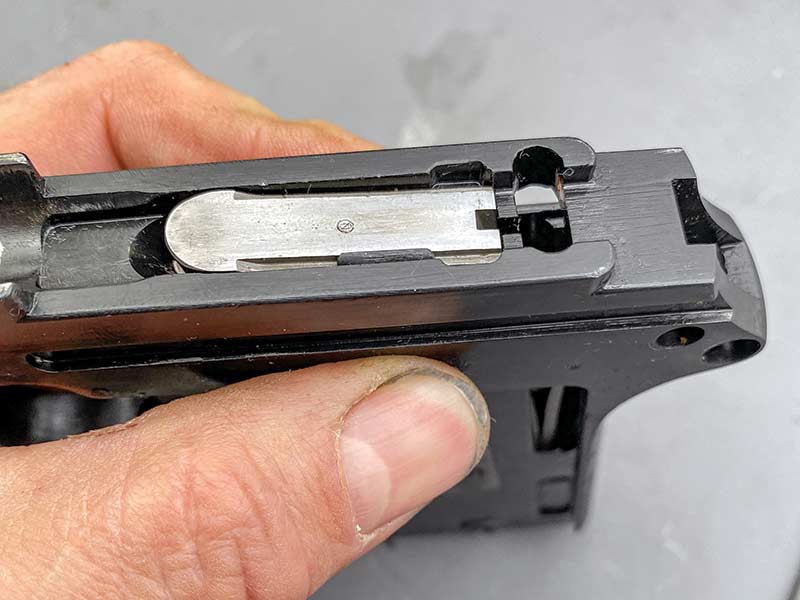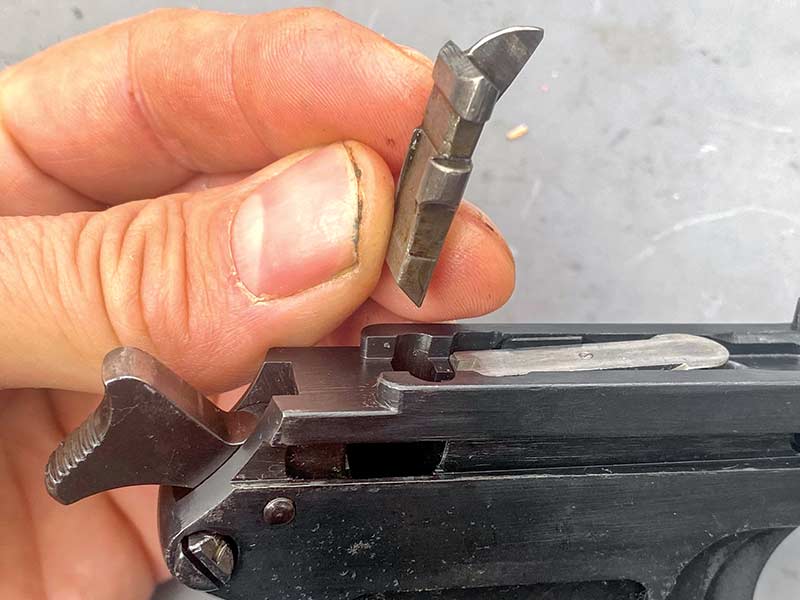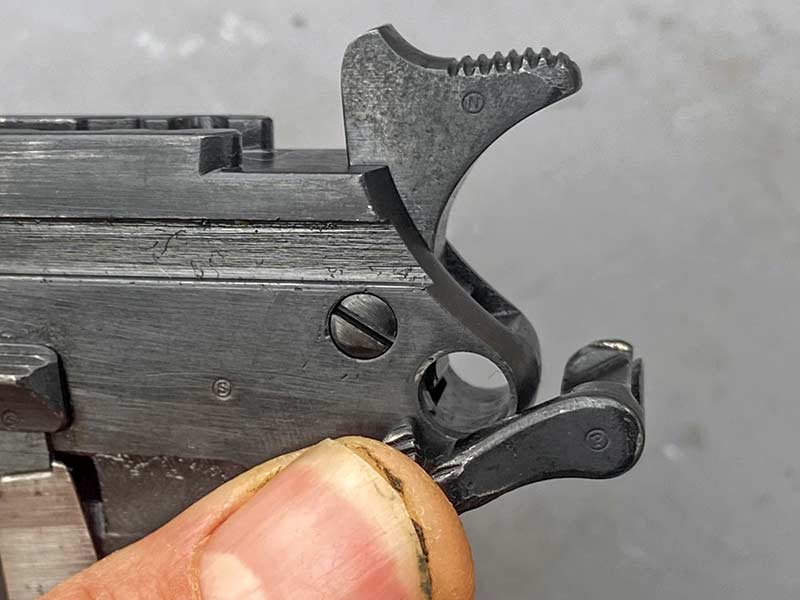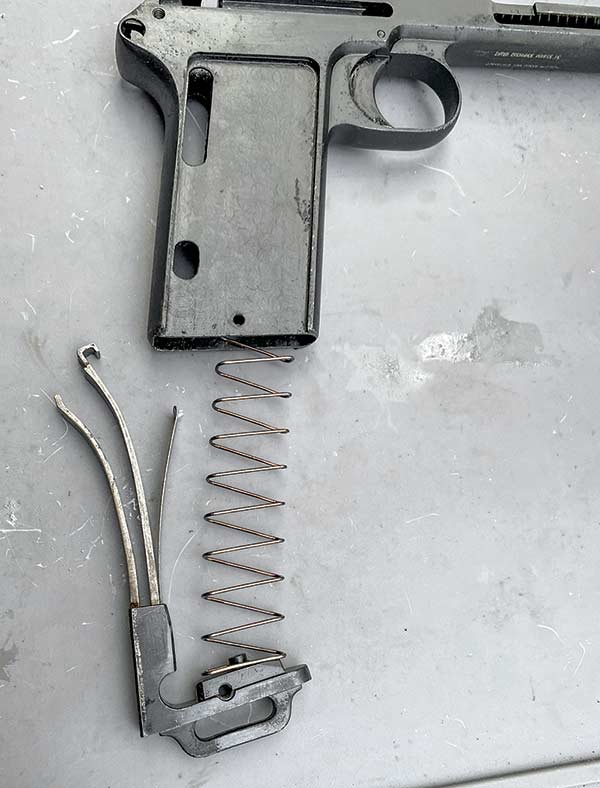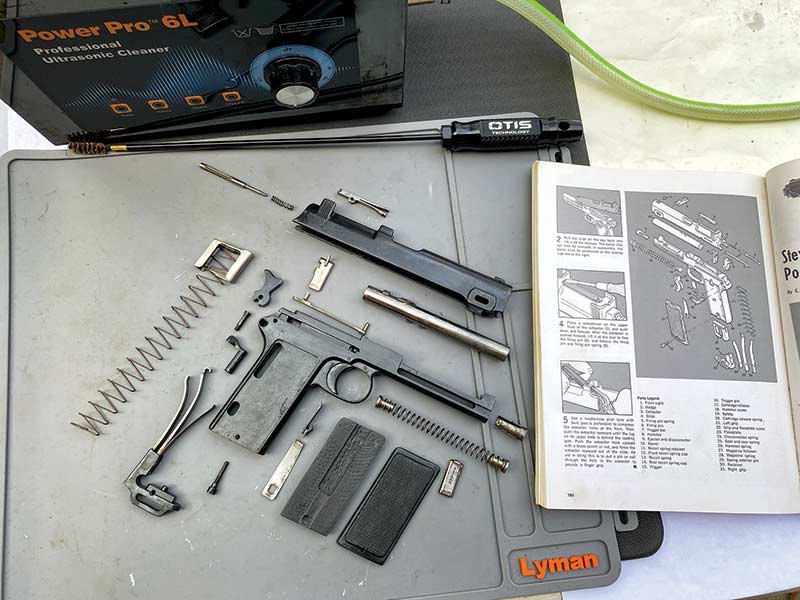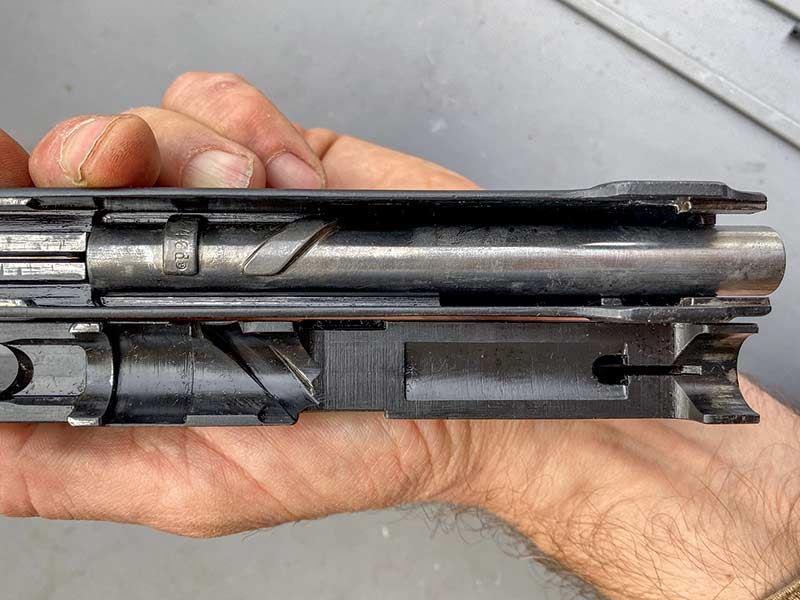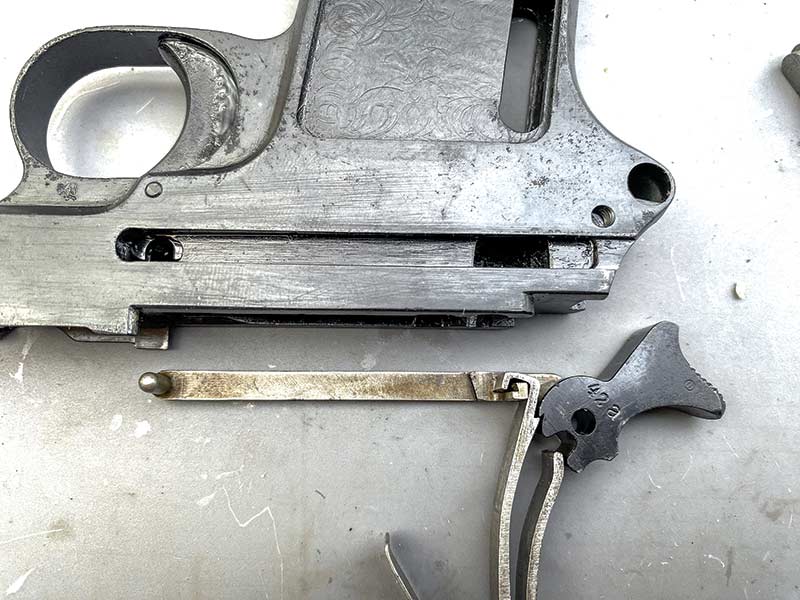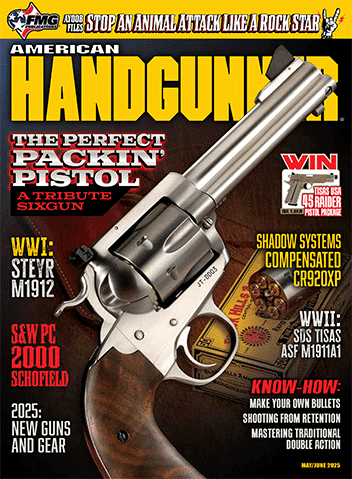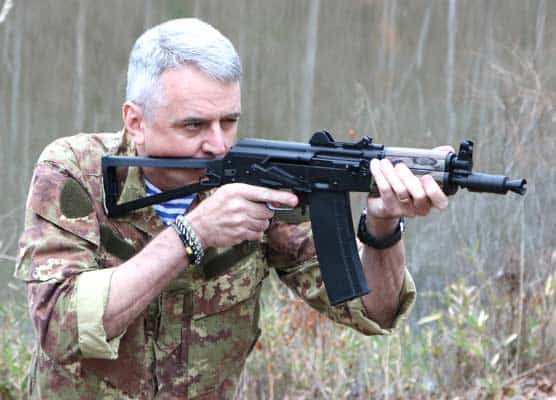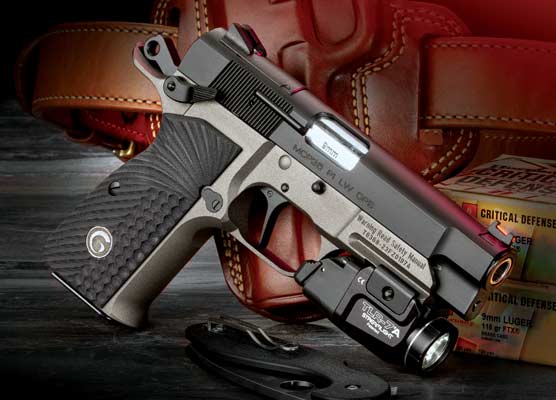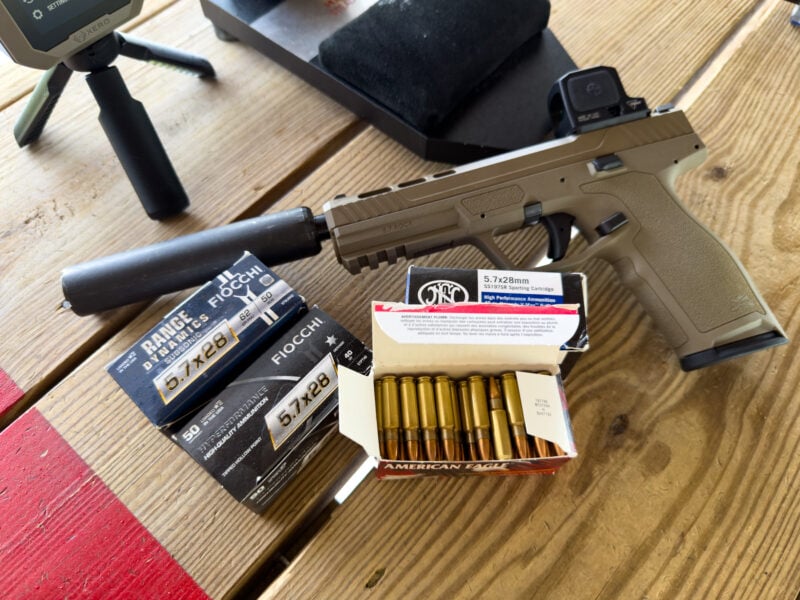Steyr M1912
World War One Autoloader of the Austro-Hungarian Empire
By World War I, the early designers of semi-automatic pistols had overcome the initial ergonomic, caliber and reliability limitations that hampered their wide acceptance, and many practical models were in general use by civilian, police and military forces. The American .45 ACP caliber Colt Model 1911 and German 9x19mm caliber P-08 Luger are the most famous semi-automatics of this period on the military side. Less well remembered, though fully successful as a combat handgun, was their peer, the 9x23mm caliber Steyr Model 1911 and 1912. In the Austrian-Hungarian Army, this pistol was nicknamed the Steyr-Hahn. Hahn is German for hammer. In this column, I’ll focus on an overview of the brilliant and original engineering that went into these Steyr pistols so I’ll cover their history only briefly.
Steyr Story
The Steyr-Hahn was developed in Austria specifically for military use by Österreichische Waffenfabrik Steyr. Approximately 250,000 pistols were made between 1912 and 1919. Chile and Romania were early adopters, but the Austro-Hungarian Army was initially uninterested in the new pistol because they had just adopted the semi-automatic, 8x18mm caliber Repetierpistole M.7, commonly known as the M1907 Roth-Steyr. The outbreak of World War I changed their minds. In 1914, they adopted the new Steyr as the M1912 and purchased the vast majority of the production. Bavaria and Bulgaria purchased several thousand, too, for use in the Great War. The Steyr-Hahn, as it quickly came to be called, earned a solid reputation on the battlefield and served afterward with the Austrian military and police and quite a few other less likely places through World War II.
Basic Mechanics
At first glance, the Steyr-Hahn has a fairly conventional appearance by modern standards, with the magazine housed inside the grip, a full-length slide enclosing the top of the frame, and an exposed hammer. If you were a gun aficionado 123 years ago, you would notice its exterior was similar in general appearance to Colt’s Model 1902 .38 ACP self-loader, which also used a horizontal wedge to link the slide to the recoil spring, the latter housed inside a machined-out pocket in the frame beneath the barrel. Both pistols are locked breech, short recoil, operated. Both had 8-shot magazines. The 5″-barrel Steyr-Hahn’s proprietary 9x23mm (9mm Steyr) cartridge was ballistically similar to the .38 ACP fired in the 6″ barrel Colt. Both shot a 115-grain bullet at around 1,200 fps.
Compared to the Colt M1911, the Steyr-Hahn slide lock release button and manual safety lever are similarly located on the rear left corner of the frame for easy shooting hand thumb operation, but the Steyr’s grip angle is steeper, which causes the gun to point lower than the Colt.
Cosmetics and barrel wedge aside, mechanically, the Steyr-Hahn was vastly different from its Colt peers. The Colt M1902 barrel was hinged to the frame at both the muzzle and breech end, so it remained level as it dropped down to unlock from the slide. The Colt M1911 barrel was hinged to the frame under the chamber only, causing it to tip downward at the rear and upward at the muzzle when unlocking.
In contrast, the Steyr-Hahn barrel wasn’t hinged to its frame at all. It locked and unlocked from the slide by rotating on its longitudinal axis! The barrel had a pair of locking lugs on its upper surface that engaged pockets cut into the slide and an angled turning lug and transverse stop lug on the bottom that engaged a slot and pocket milled into the frame. The Austrians seem to have had a thing for rotating locking mechanisms in firearms, and the Steyr-Hahn reminds me of a pistol version of Ferdinand von Mannlicher’s straight-pull bolt action rifles. The Steyr-Hahn barrel/slide/frame lock-up design was much simpler than Browning’s, had fewer parts, and took up less vertical space, allowing for a lower bore axis and improved control in recoil.
Magazine
The Steyr-Hahn did not have a removable box magazine. It was loaded using 8-round stripper clips. The unique clips had long “legs” on each end, measuring about 3mm, that passed through the slide into mating slots in the frame to lock the slide open while the cartridges were pressed into the magazine with the thumb. After the last round was in the magazine, the slide remained locked back by the legs of the empty stripper clip. Removing the clip let the slide move forward, strip a round from the magazine and load it in the chamber. It takes less time to do than it does to tell, though it’s not quite as fast as changing a box magazine.
Though the Steyr-Hahn’s loading procedure wasn’t a notable handicap in World War I, by that time, it was clear that detachable box magazines, particularly those that loaded up through the grip of the pistol, were more popular.
However, since they had fewer parts, stripper clip-loaded, fixed magazine pistols allowed for lower manufacturing costs. They also appear to offer the operational simplicity needed to “soldier-proof” a weapon system. The Steyr-Hahn’s manual safety lever was also designed to serve as a slide-hold-open latch, allowing the pistol to be fully loaded without a stripper clip. That’s a feature the C96 Mauser never had!
Unloading & Functions
Another distinctive feature of the Steyr-Hahn is the safe and efficient way it is unloaded. Like most military semi-automatics, the magazine follower locks the slide open after the last round is fired or when the slide is drawn back with the magazine empty. What looks like a slide-lock release button on the Steyr-Hahn is useful in that sense only when the pistol is unloaded. Its main purpose is to empty unfired ammunition from the magazine, which it will do with spectacular effect. It would not be inaccurate to describe it as launching a fountain of bullets into the air. I assume soldiers held the pistol upside down with their hand cupped over the ejection port or perhaps held their cap under it while unloading.
The Steyr-Hahn hammer has no half-cock safety position. It’s either cocked or down. The manual safety lever locks the slide and blocks forward movement of the hammer regardless of its position. When engaged and in conjunction with a spring-tensioned inertial firing pin, the user is protected from accidental discharge if the weapon is dropped. When carrying the pistol with the manual safety on and the hammer down over a loaded chamber, there is no need to switch the safety lever off before cocking the hammer to fire. Cocking the hammer will automatically move the safety lever to the firing position.
Elegant Engineering
The Steyr-Hahn shows an efficiency of engineering that manifests itself in many parts serving multiple roles. The recoil spring serves as the trigger return spring. The sear spring serves as the actual sear. The disconnector serves as the ejector. The safety can be used to lock the slide open for cleaning or unloading. The pocket in the frame serves as the recoil spring guide. The unloading button is also a slide lock release.
The Steyr-Hahn design principles are also very sound. The trigger and sear are linked by a single rigid trigger bar, giving the gun a crisp (though heavy) trigger pull. The trigger is the hinged type, but the trigger bar attaches to the very top of it, close to the trigger pivot pin, which affords excellent mechanical leverage. The slide-to-frame fit is tight with no detectable wiggle. I attribute this to the slide’s substantial guide rails that engage channels in the frame with 80mm of contact area on each side. In addition, the slide wedge, which moves inside a closed slot in the frame, further stabilizes the slide on the frame. There’s nothing loosey-goosey in this gun’s fit. The wooden grip panels are even dovetailed into the frame.
In closing, let me point out that the machine work on the Steyr-Hahn pistol, while much less elaborate than that found on the P-08 Luger and Mauser C96 pistols, is more complex than John Browning’s designs. The M1911 has 47 parts to the Steyr-Hahn’s 32 parts. The Steyr-Hahn has fewer parts because so many serve dual roles or are so well designed that, by themselves, they can take the place of several related parts. Those parts would still be challenging to make today, which is probably why we don’t see pistols made like this anymore.
At the time the Steyr-Hahn was in production, it was a lot easier to make than a P-08 Luger or C96 Mauser but more involved than the contemporary John Browning designs. At a time when highly skilled labor was relatively cheap, some manufacturing choke points could be addressed by enlarging the labor force, but the limitations of this became apparent during World War I when the sheer magnitude of the materiel, not to mention the men consumed in battle, exceeded replacement capacity. The Steyr-Hahn was among the last and best of the early semi-automatic designs that marched to a different drummer.

